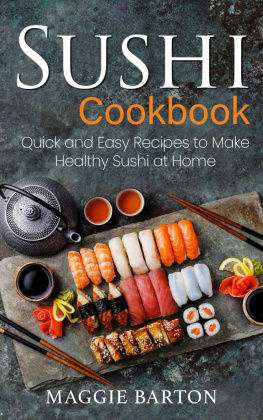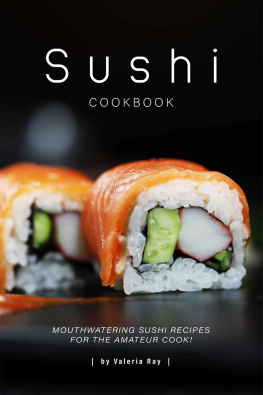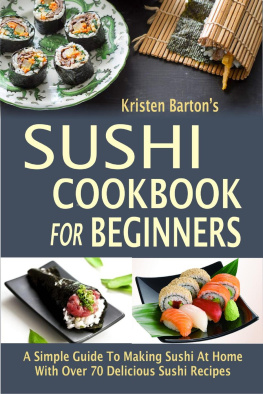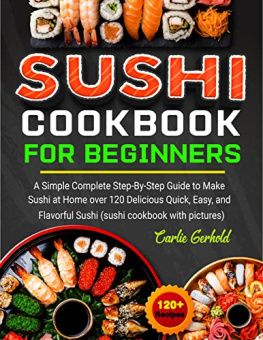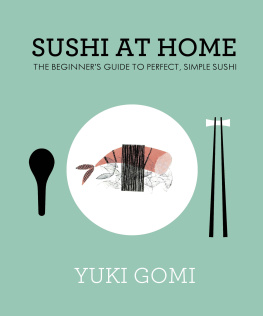Copyright 2020 by Rockridge Press, Emeryville, California
No part of this publication may be reproduced, stored in a retrieval system, or transmitted in any form or by any means, electronic, mechanical, photocopying, recording, scanning, or otherwise, except as permitted under Sections 107 or 108 of the 1976 United States Copyright Act, without the prior written permission of the Publisher. Requests to the Publisher for permission should be addressed to the Permissions Department, Rockridge Press, 6005 Shellmound Street, Suite 175, Emeryville, CA 94608.
Limit of Liability/Disclaimer of Warranty: The Publisher and the author make no representations or warranties with respect to the accuracy or completeness of the contents of this work and specifically disclaim all warranties, including without limitation warranties of fitness for a particular purpose. No warranty may be created or extended by sales or promotional materials. The advice and strategies contained herein may not be suitable for every situation. This work is sold with the understanding that the Publisher is not engaged in rendering medical, legal, or other professional advice or services. If professional assistance is required, the services of a competent professional person should be sought. Neither the Publisher nor the author shall be liable for damages arising herefrom. The fact that an individual, organization, or website is referred to in this work as a citation and/or potential source of further information does not mean that the author or the Publisher endorses the information the individual, organization, or website may provide or recommendations they/it may make. Further, readers should be aware that websites listed in this work may have changed or disappeared between when this work was written and when it is read.
For general information on our other products and services or to obtain technical support, please contact our Customer Care Department within the United States at (866) 744-2665, or outside the United States at (510) 253-0500.
Rockridge Press publishes its books in a variety of electronic and print formats. Some content that appears in print may not be available in electronic books, and vice versa.
TRADEMARKS: Rockridge Press and the Rockridge Press logo are trademarks or registered trademarks of Callisto Media Inc. and/or its affiliates, in the United States and other countries, and may not be used without written permission. All other trademarks are the property of their respective owners. Rockridge Press is not associated with any product or vendor mentioned in this book.
Interior and Designer: Lisa Schreiber
Art Producer: Janice Ackerman
Editor: Marjorie DeWitt
Production Editor: Andrew Yackira
Custom Photography: 2020 Antonis Achilleos. Food Styling by Gordon Sawyer.
Illustration Courtesy of iStock:
Photography Courtesy of iStock: : Kate Lewis
Illustration Courtesy of Shutterstock: p. vi, viii, 27, 28, 32, 33, 38, 50, 55, 70, 83, 87, 95, 99, 106, 107, 109, 115, 117, 118, 119, 120, 129, 135, 139, 146, 148, 149, 150, 151, 152, 153, 154, 155, 156, 157, 158, 159, 160, 161, 162, 163
ISBN: Print 978-1-64611-878-6 | eBook 978-1-64611-879-3
R0
To my mother (March 10, 1947April 25, 1995) for giving me limitless love. To my husband, Frank, for depthless support in every way.
Contents
Sushi is no longer just a Japanese foodits now all the rage around the world. Many sushi dishes are pieces of art and beautifully created based on multicultural tastes. This creativity and the unconventional idea behind sushi ultimately increased its popularity and impressed me when I first ate it.
Traditional Japanese sushi is prepared by sushi chefs. In Japan they are technically called craftspeople, and not chefs, and the sushi they prepare is considered an important craft. The reason this terminology is used is that it generally takes three to five years to become a sushi chef, and doing so requires special techniques and a lot of patience to uphold the old traditions. Chefs in training are not able to learn how to prepare sushi in the first year, but rather they learn how to clean a restaurant, deliver, cook rice, and serve customers. After the first year they begin learning to prepare sushi in earnest. A skillful sushi chef can grab exactly the same weight and the same number of rice grains without looking each time they make nigiri sushi, and the rice isnt crushed but holds its shape completely. Its this perfection and craftsmanship that drives Japanese people to go out to restaurants rather than prepare sushi at home.
Of course, high-quality sushi is delicious, but it can be very expensive. Therefore, lately, there are many people who try to make their own sushi, even in Japan. Homemade sushi should be delicious, easy to make, and beautiful. There are many global, nontraditional, awe-inspiring sushi recipes for people to make at home.
When I was a child, my mother and my grandmother often made traditional sushi rolls and inari sushi, a popular Japanese rice ball. It was the best sushi I have had in my life. Although the fillings are the same as traditional recipes, the seasoned rice tasted different. This is one of the advantages of homemade sushiadjusting the seasoning according to personal taste and adding any ingredients as fillings. I learned a lot about cooking from my mother and grandmother that helped me appreciate the simplicity behind making sushi. I am here to tell you how, and that making sushi is not complicated. You can do it, too.
In this book I made the recipes easy and used ingredients that are simple to find and available in the United States. There are seafood, meat, vegetarian, and vegan sushi dishes. An added benefit is that most sushi is gluten-free if you use gluten-free soy sauce. This book also includes many tips to help you make good-looking sushi. You may need a bit of practice, but with this cookbook you will easily be able to make your own sushi. Just follow the recipes and you can eat your favorite sushi anytime you want without going out to a sushi restaurant!
MAKING HOMEMADE SUSHI IS NOT DIFFICULT AT ALL, AND this book is your Sushi 101 guide. It contains all the basic things you need to know about sushi, how to prepare it, necessary equipment, ingredients, etiquette, the art of serving, and useful tips. This book will fully prepare you to create sushi with confidence and fun!
The History of Sushi
About 1,300 years ago, people fermented fresh fish with salt and rice to preserve it. This was the beginning of sushi. However, the rice was used as a fermentation ingredient, and only the fish was eaten. Even today this approach is reflected in a famous regional sushi cuisine from Shiga prefecture, called funazushi .


